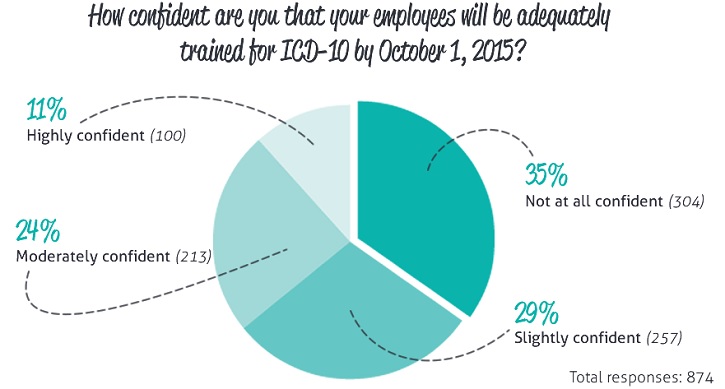Practical Applications of NLP in Healthcare: Enhancing the Value of Electronic Data
Approximately 65 percent of hospitals plan to spend an average of $1.9 million on analytics in 2015, according to a survey conducted by CDW Healthcare. By applying complex algorithms to massive volumes of electronic data, analytics work to lower costs, improve care, predict outcomes, and manage population health. Many experts believe analytics drive the true return on investment of EHR technology.
However, 80 percent of the data that resides in EHRs remains in an unstructured narrative format, making it virtually inaccessible for analytics purposes. Furthermore, healthcare data is spread across multiple hospital systems—disjointed and unintegrated. Disparate systems capture the same information, but in different formats, nomenclatures and terminologies. One multi-hospital health system reported 67 different ways to identify patient gender during a recent data clean-up project.
Faulty, redundant and unstructured information within hospital systems impede the healthcare industry’s progress toward effective, data-driven decision making. This article explores how natural language processing (NLP) is being used to address one of these data disparity issues: unstructured data.
NLP Provides Antidote for Unstructured Data
NLP technology taps into the power of unstructured data. NLP is used within and atop existing systems and technology applications to support better data-driven decision making in five key operational areas: ICD-10 coding, speech recognition, core measure reporting, research/clinical trials, and clinical documentation improvement.
NLP generates key data points from electronic, text-based documents. Once identified by the NLP rules engine, the data points can be analyzed and manipulated in a variety of ways. NLP allows organizations to perform tasks such as case identification, real-time patient monitoring, and data gathering for national quality reporting. Without NLP, traditional data analytics tools simply wouldn’t work with unstructured data.
NLP is also often in the background of more visible technologies that make work easier for physicians, coders, case managers, and many others who rely on clinical data within an organization. For example, computer-assisted coding (CAC) and speech recognition vendors use NLP’s rules and engines as the underpinnings for their applications. Without NLP, these technologies wouldn’t be nearly as effective.
Four Specific Use Cases for NLP
Let’s take a closer look at how organizations are using NLP to get at the heart of clinical data in the EHR.
- Create opportunities for clinical documentation improvement (CDI) efficiencies. NLP helps CDI specialists perform comprehensive data mining in a matter of seconds. Instead of reviewing hundreds of cases, CDI specialists use the NLP-generated work list to focus exclusively on cases with identified documentation gaps and improvement opportunities. The ability to automate case finding will become even more critical as organizations improve the granularity of clinical documentation for accurate coding and billing under ICD-10.This data-driven workflow improves query rates and overall efficiency, and it allows CDI specialists to focus on fixing documentation rather than searching for certain diagnoses. Greater efficiency, in turn, improves financial outcomes through increased review rates.
- Expedite patient identification for clinical trial enrollment. NLP helps organizations quickly identify patients who may be eligible for immunotherapies, clinical trials and medical research. Automated case finding ensures patients are informed about all possible care options early in the disease process versus post discharge thereby making clinical trials more efficient and effective.
- Comply with core measures. Using NLP, organizations assess documentation immediately upon admission so close monitoring can occur. Quality reviewers spend more time reviewing cases instead of sifting through charts. NLP also allows for faster review of progress notes and problem lists, helping quality reviewers identify patients as soon as they fail criteria in the ED so prompt action can be taken.
- Provide real-time data about patients. Hospitals use NLP concurrently to monitor patients while they are in the hospital receiving treatment. For example, as physicians document certain diagnoses or procedures (e.g., insertion of urinary catheter), NLP generates alerts and reminders so providers monitor these patients frequently to mitigate the risk of urinary tract infection—one of many hospital-acquired conditions identified by CMS.Another example is using NLP to track sepsis patients. NLP helps uncover the symptoms immediately rather than retrospectively. Physicians can then direct their attention toward these patients and reduce the likelihood that they will be readmitted.
HIT Vendors Successfully Leverage NLP
Vendors (i.e., overlaying applications) are also using NLP in a variety of ways. Consider the three most common applications of NLP in healthcare: coding, EHRs and speech recognition/dictation.
CAC instructs the underlying NLP engine to find clinical problems and procedures within terms and phrases of documentation. It also delineates the current from the past as well as personal from familial. In addition, NLP associates certain descriptors with the appropriate nouns/diagnoses, such as associating “exacerbation of” or “acute diastolic” with the term “heart failure.” Once CAC has obtained this structured data, it can apply unique clinical ICD-9 and ICD-10 codes that a medical coder subsequently reviews and validates.EHR systems
When embedded directly within the EHR, NLP automatically converts a physician’s free-text comments as well as digital narrative text-based content into discrete data. Some vendors combine speech recognition technology with NLP to prompt physicians to elaborate on or clarify certain documentation elements as they dictate – known as Computer-Aided Physician Documentation (CAPD).
Speech recognition/dictation
Unlike speech recognition, which simply converts spoken word into digital text, NLP infers meaning behind the words. Physicians continue to dictate and/or speak their reports while NLP engines convert this information into work lists for CDI professionals, discrete data for the EHR, or quality measure compliance reports.
It’s All About the Data
NLP will continue to play an important role in data analytics and population health management. As more organizations implement EHRs, NLP will be the foundation for abstracting valuable narrative information and turning it into actionable data that can make a big difference in terms of healthcare outcomes and efficiency.
Faulty and redundant data issues will remain a problem in healthcare and must be addressed through stronger information governance programs. In the interim, organizations and technology vendors should use NLP to eliminate one major electronic information hurdle—unstructured data.
About the Author:
Steve is responsible for business development and product strategy at RecordsOne. Since joining in 2007, he has guided the company from a dictation and transcription technology vendor to a complete clinical documentation solutions provider. He has worked with multiple hospital and clinic organizations to assess, improve and automate revenue cycle processes and workflows through technology.
Steve is a national author and speaker on the use of natural language processing technology in healthcare. He works hand in hand with hospitals to identify new and innovative uses for NLP within coding, clinical documentation improvement, quality reporting and reimbursement. Steve is an active member of AHIMA, ACDIS, HIMSS and WEDI with most recent speaking sessions at AHIMA’s National Data and CDI Summits in late 2015 as well as the AHIMA national convention.


 Georgia Lieutenant Governor Casey Cagle proclaimed February 24th as “Georgia HIT Day” at a state capitol gathering held earlier this week where local officials and healthcare technology firms convened to discuss the economic impact healthcare IT is having in the region.
Georgia Lieutenant Governor Casey Cagle proclaimed February 24th as “Georgia HIT Day” at a state capitol gathering held earlier this week where local officials and healthcare technology firms convened to discuss the economic impact healthcare IT is having in the region.
